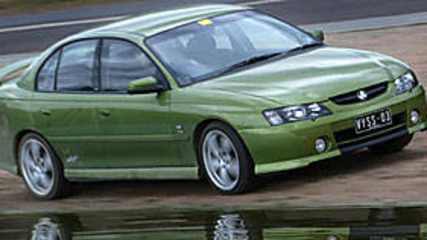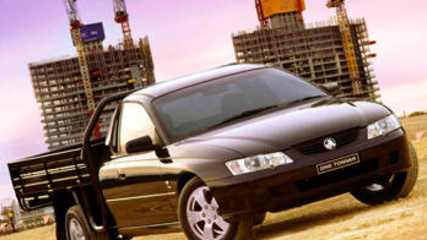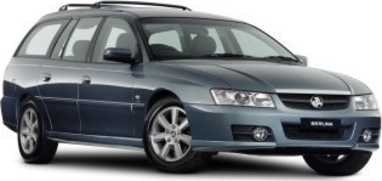Used Holden Commodore review: 2002-2004
By Graham Smith · 23 Jan 2009
“If it ain’t broke, don’t fix it” is an old truth, one Holden faithfully followed when it facelifted the VT Commodore once it proved a runaway success. The current VZ is the third major facelift of the VT, there were three minor updates as well as Holden worked to keep the Commodore fresh through the eight years since the VT was launched.That it has been able to keep the Commodore selling so strongly for such a long time is testament to the original design, which has dated particularly well.The VY launched in 2002 was the second major update of the VT and brought with it further refinements to the body, powertrain and chassis which reaped rewards in improved performance, ride and handling, and safety.Another minor update in 2003, the VY II, continued the evolutionary development of the series with a raft of more subtle refinements.Holden served up the familiar model range with the VY. The Executive was aimed at the fleet buyer, the Acclaim more at the private buyer, with the Berlina and Calais appealing to user-choosers who wanted more.There were also the sporty models in the S and SS, but this time there was a new sports sedan in the SV8, which offered much of the SS features at a more affordable price.Styling changes brought a more aggressive look, with new grilles and headlamps, bumper treatments and tail lamps.The power choices were much the same, the well proven 3.8-litre overhead valve ECOTEC V6 was carried over unchanged, while the power of the 5.7-litre overhead valve Gen III V8 jumped to 235 kW with a retuned twin exhaust system.There was nothing much new on the transmission front, with a choice of four-speed auto or five-speed manual on the V6, and four-speed auto or six-speed manual on the V8.Under the sharp skin Holden’s chassis engineers made some major revisions, mostly to the steering which was adapted from the Monaro after it had been widely praised for its steering feel and precision.In the 2003 VY II update Holden gave the luxury Calais a more European personality with bolder styling inside and out, larger alloy wheels, and sportier suspension settings.The Gen III V8 was offered in two forms, a dual exhaust version, which boasted 245 kW at 5600 revs for the SS and SV8 models, and a 235 kW single exhaust version for the rest of the range.Generally the Commodore is quite reliable. Little seems to go wrong with the V6 engine, which has proven to be a tough old unit, but debate rages over the oil consumption and piston rattle problems that plagued the Gen III V8.The best explanation of the problem appears to be that Holden released piston rings that were a loose fit in the bore in the interests of fuel consumption. On some engines that resulted in an audible light piston rattle along with high oil consumption.New Teflon-coated pistons and tighter rings was released which appear to have fixed most problem engines. Problem engines were rebuilt so it’s unlikely you’ll find one in the field now, but it’s worth checking the history of any V8 with the owner. Ask for any oil consumption history they might have, and check if it’s been rebuilt.The Auto transmissions are generally reliable, but need regular servicing for reliability, so check for a service record. Check the trans oil in any car fitted with a tow bar, and look for signs it has been used for heavy towing.The introduction of the toe-link to the Commodore’s IRS in the VX model improved the handling precision and response. Importantly it also improved tyre wear, but be warned tyre wear is still quite high. If you get 40,000 km from a set of tyres you’re doing well.Further stiffening of the body shell aided primary crash protection with reduced risk of lower limb injury, while dual airbags were standard on all models, along with load-limiting seat belt retractors.The recent used car safety survey rated the Commodore above the average for occupant protection, but not so high when it came to impact on the occupants of the car you hit.Margaret and John Rowe have owned four Commodores and now own a VY which has done 41,000 km of mostly country running. On the plus side they like the road holding and drivability, the quiet comfortable ride, seats, safety, parking sensors, and used friendly cabin layout. On the other side they don’t like the LCD dash display, the boot hinges which eat into the boot space, the limited choice of trim colours, and the lack of a boot key. They say the fuel consumption, 9.0 L/100 km in town, eight L/100 km out, is good.Michael Fava owns a 2004 VY II Equipe, and says it’s a great car with heaps of power and good looks. His complaints are minor, the location of the radio tuning controls on the steering wheel, a broken storage compartment lid on the dash, and the rear parking sensors are too sensitive. The highway fuel consumption, 8.7-9.5 L/100 km, is good, but he’s not as happy about the 11.0-12.5 L/100 km he gets around town.Rod Kidd says he’s happy with his 2003 VY Commodore S pack Commodore, which has done 38,000 km without fault. Rod chooses Aussie-built six-cylinder cars because of their perceived value for money.Victor de Beer is happy with his 2003 VY II SS Commodore, which has done 19,000 km, but feels it needs better brakes and a more up-to-date auto transmission. The worst part of owning an SS Commodore is its high tyre wear.Stephen Matthews recently updated to a VY V6 auto Commodore, which now has 24,000 km on it. Since buying it he has noticed a slapping noise or dull lifter noise when the car is restarted after it is already warm. Holden has replaced the lifters without effect.• Sharp aggressive styling• reliable and fuel efficient V6• possible oil consumption of V8• improved steering precision• comfortable seats• safety of airbags• stiffened body structureBooming new car sales three years ago mean lots of low mileage ex-lease cars flooding on to the market now making the VY Commodore a good buy.









